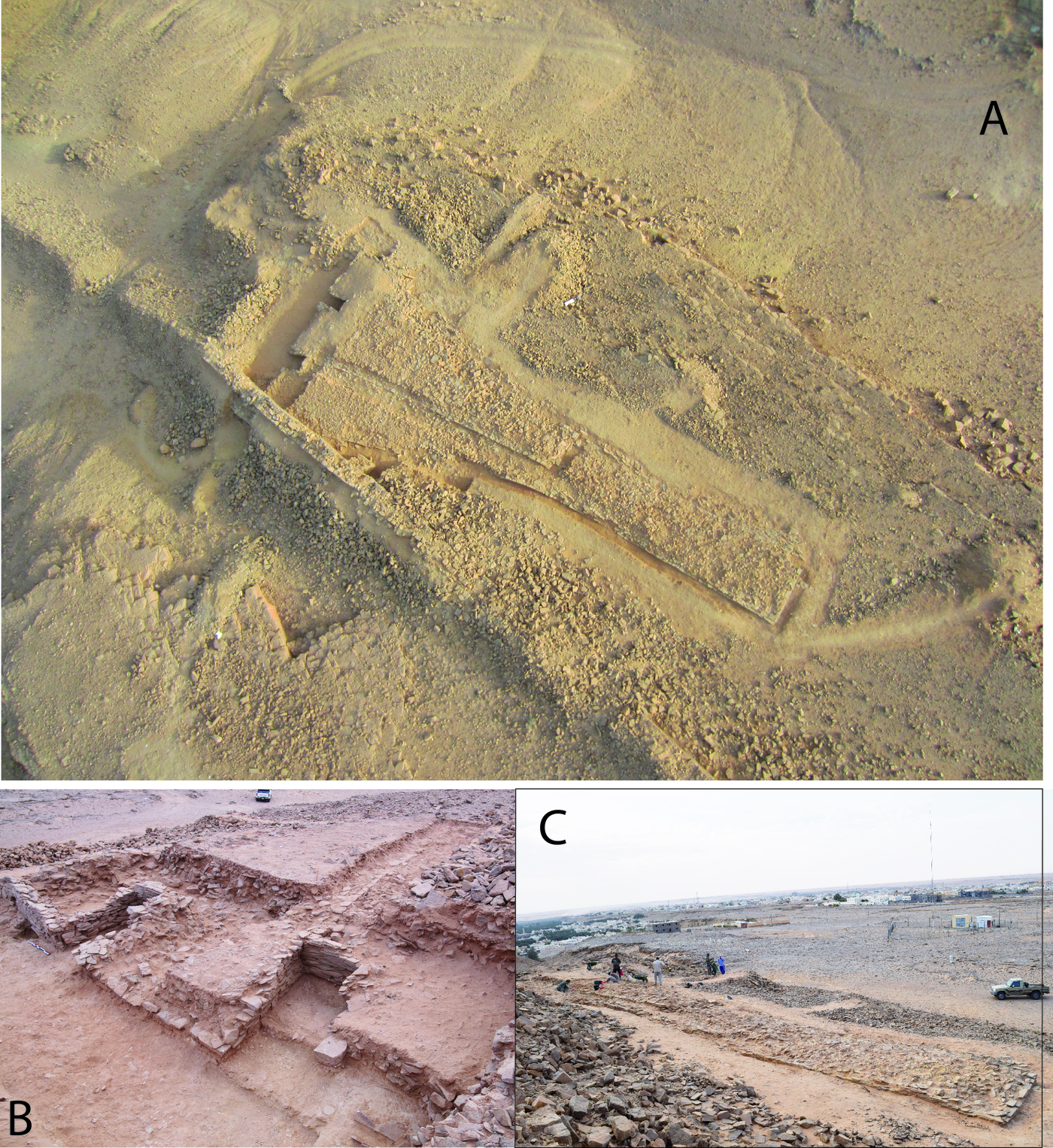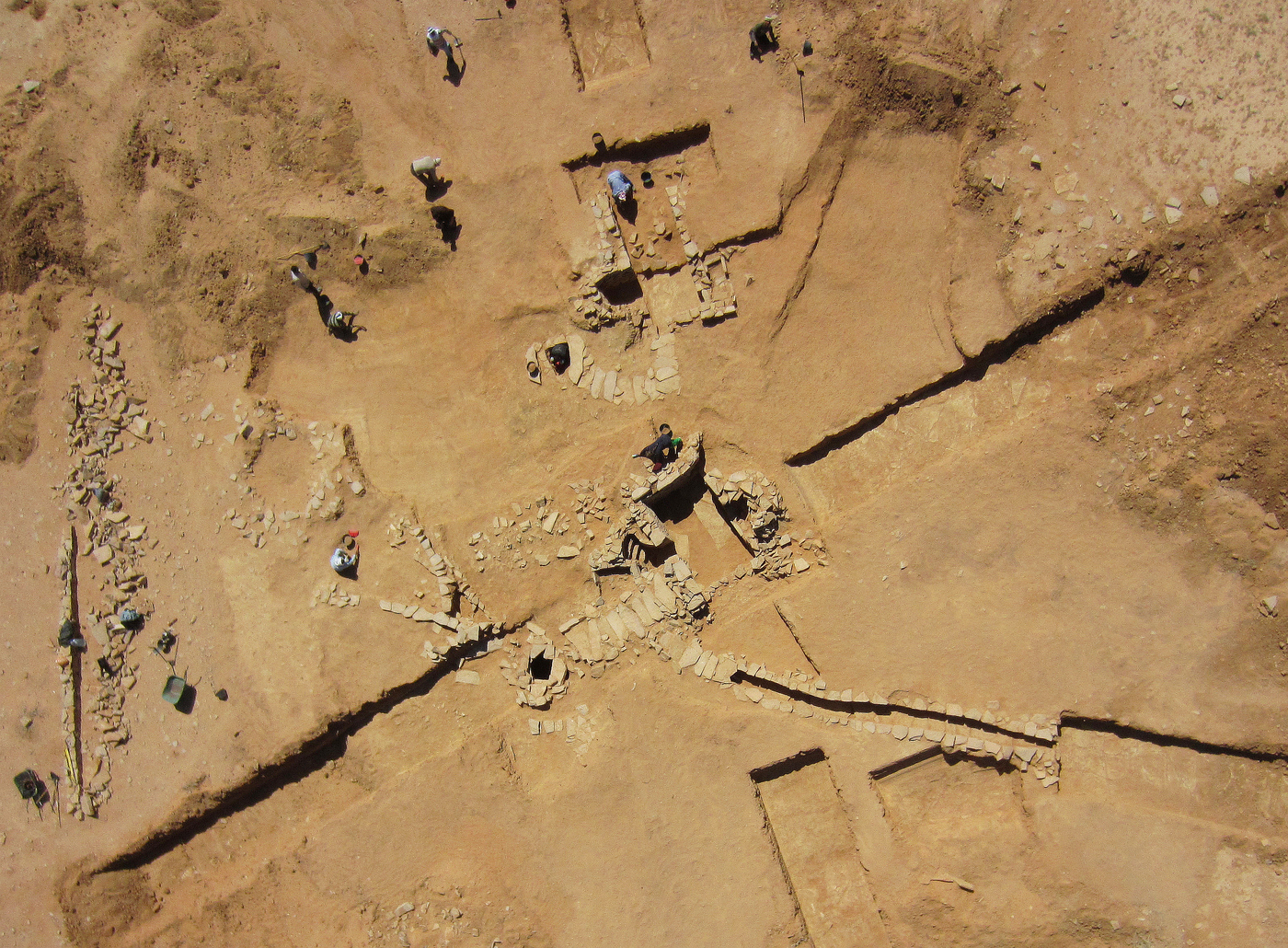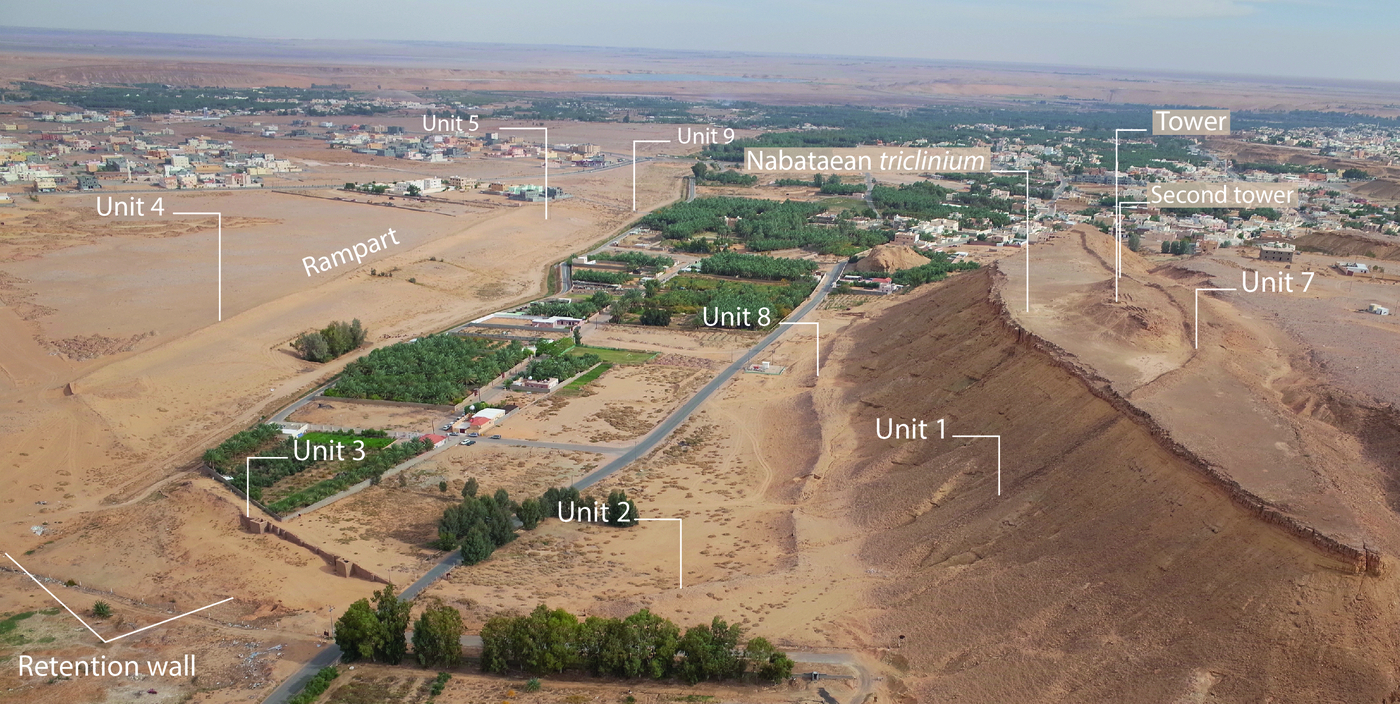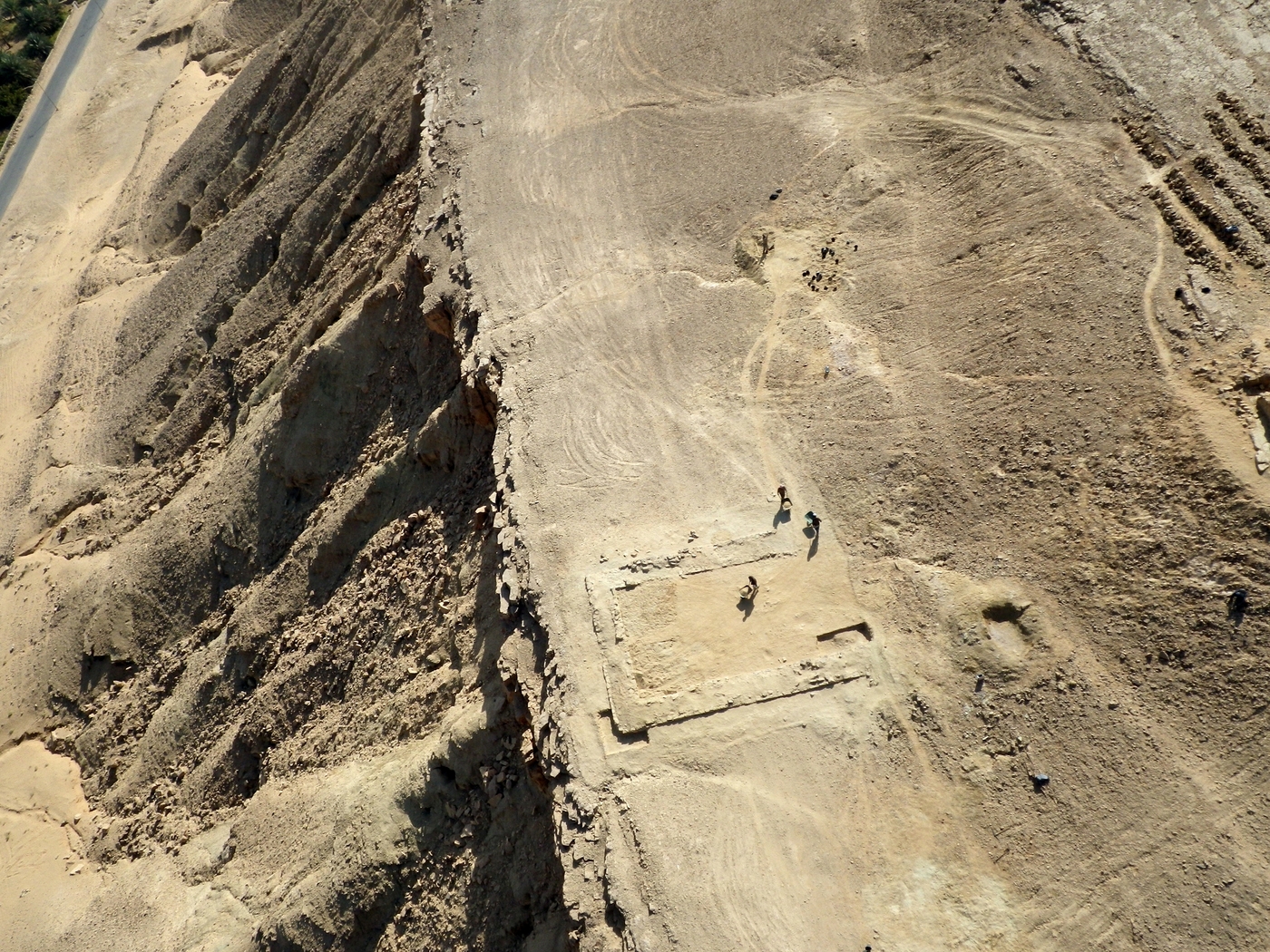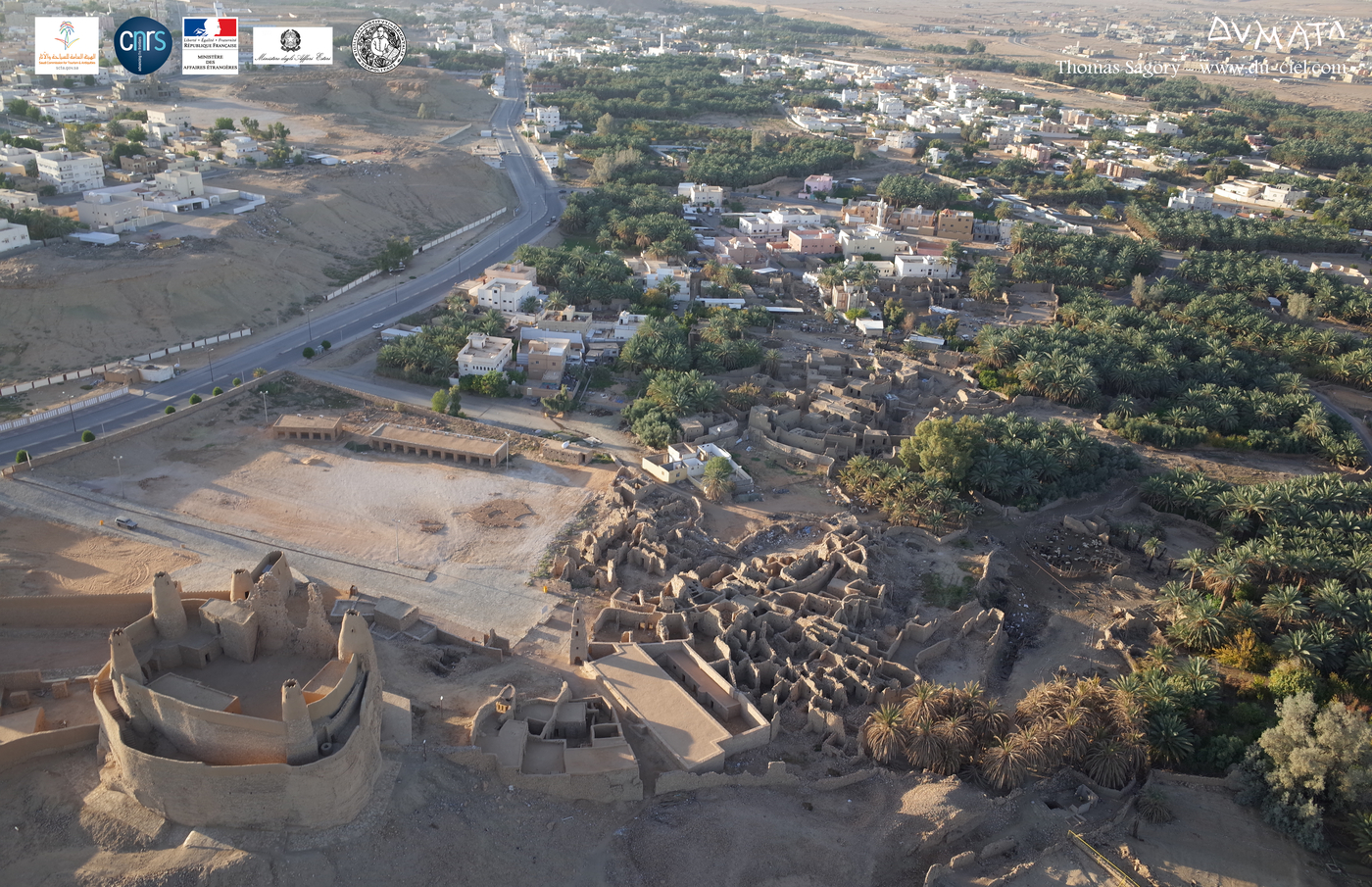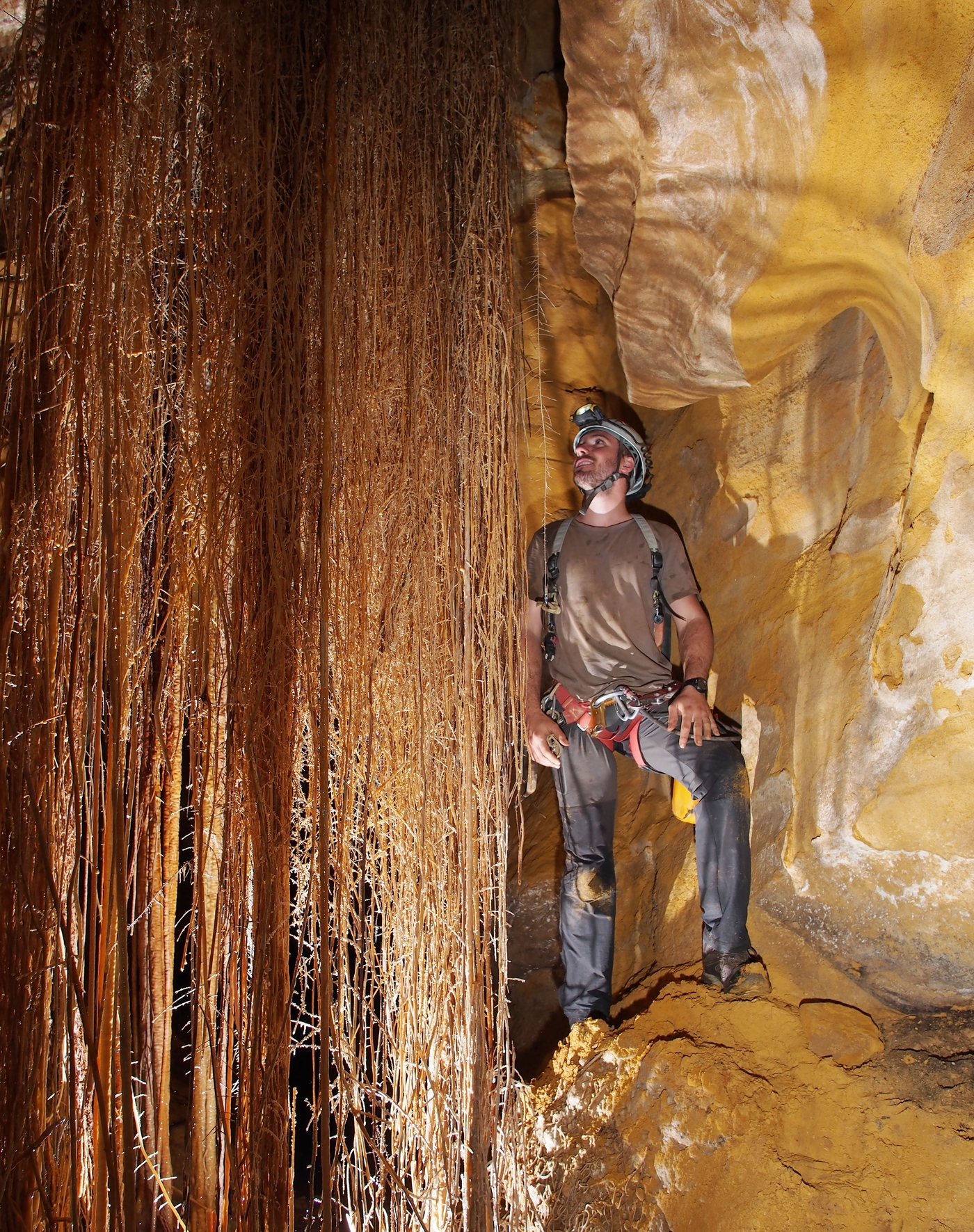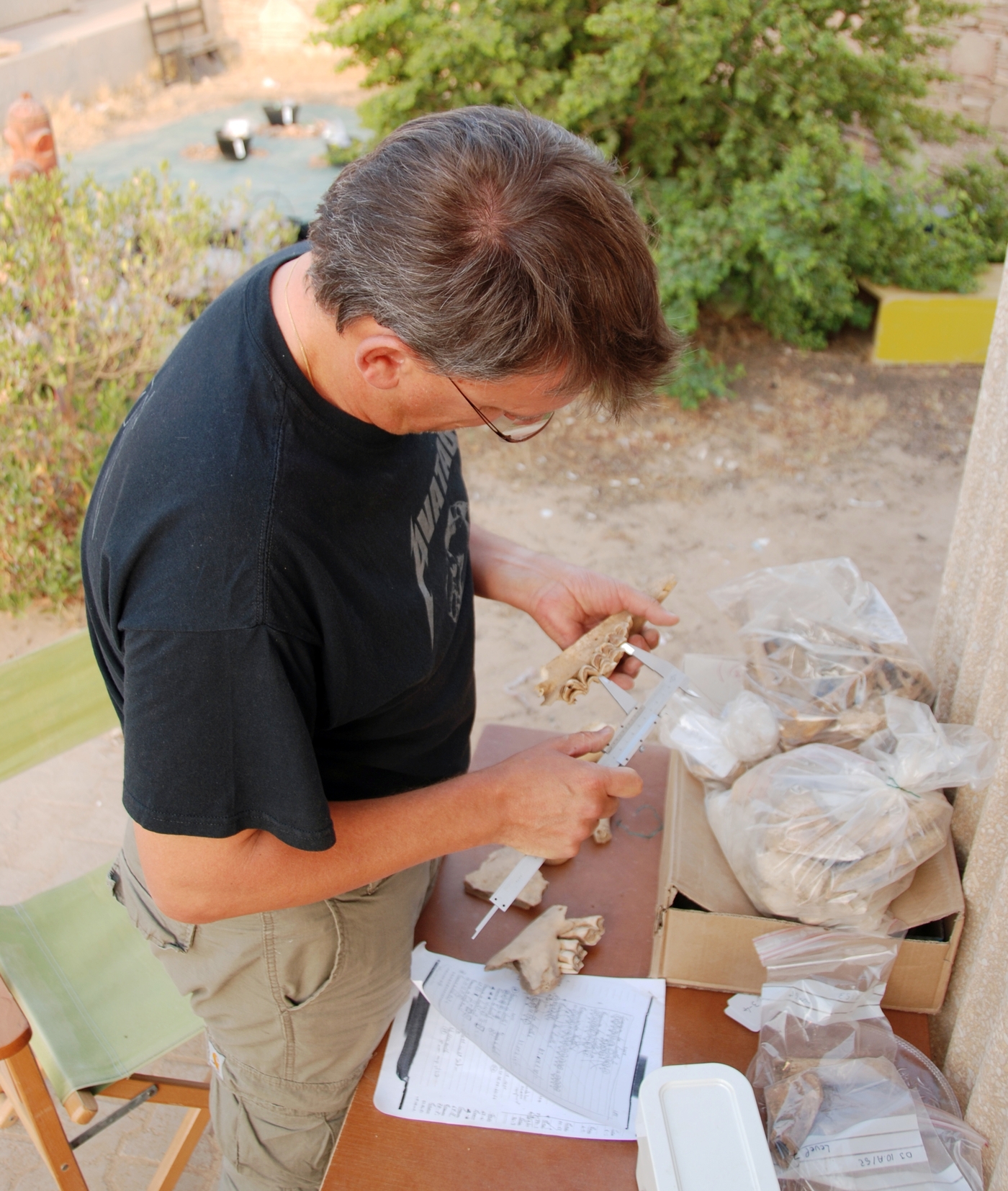Dûmat al-Jandal
Isolated in the north of the Nafud Desert, at the intersection of major caravan routes, the oasis of Dûmat al-Jandal played a considerable role in the development of trans-Arabic contacts and trade from prehistoric to early Islamic times.

Mentioned many times by arabo-Islamic sources, Dumat al-Jandal was described in detail by successive 19th and 20th-century travellers. Recent archaeological discoveries have deeply modified the history of the oasis.
The oasis of Dûmat al-Jandal
Dumat al-Jandal lies at the southern extremity of the Wadi Sirhan, in a remote desert environment. Encircled by low limestone hills, the oasis is a large V-shaped depression (ca. 8 x 6 km), which favoured the recharge of aquifers.
The earliest remains
Although a large number of earlier Palaeolithic remains are scattered throughout the region, the discovery of a 35-m-long platform on the al-Burj promontory in the western sector of the oasis provides evidence for the first human presence in the oasis in the 6th mill. bce. Radiocarbon dating of collected bones in tombs yielded a sequence of recurrent human presence in Dumat, ranging from the second half of the 6th millennium until the 1st millennium bce.
Assyrian and Neo-assyrian Adummatu
The Arabic name of the oasis derives from “Adummatu”, a toponym found in the Neo-Assyrian annals in the 7th century BCE, which was also one of the centres of the tribal confederation of Qedar. Recent findings strengthen this identification and the role of the oasis as a major trade crossroads between South Arabia and North Mesopotamia in the Iron Age.
Excavations revealed abundant material culture traces attributable to Assyrian and post-Assyrian traditions, while an oven was successively repaired from the 8th-6th century bce until the 1st–2nd century CE according to 14C datings. A durable presence in the oasis during the 4th-2nd cent. bce is also visible through the construction of a stone and mud-brick rampart in the western sector of the oasis. This rampart is preserved today up to 2.6 km in length, nearly 5 m high, and 3 m thick in places. It probably entirely enclosed the oasis in the past.
The nabatean city
Nabataean presence seems likely in the region from as early as the mid-1st century BCE. An inscription, today lost, documents that the oasis housed a sanctuary of Dushara and a fort commanded by a stratopedarch under Malichos II in 45 CE. This fort would appear to have been a predecessor of the Qasr Marid, an impressive fortress dominating the oasis today. The necropolis composed of monumental collective tombs developed further west, in the al-Sunamiyat quarter. In the western area, domestic farms or dwelings were sparsely distributed in a bucolic oasis landscape of cultivated plots with narrow streets, overlooked by a 1st–2nd century CE open-air triclinium.
Like most of Nabataea, Dumat was integrated into the Roman Province of Arabia, conceivably as early as 106 CE, as proved by the recent discovery of inscriptions from Auxiliary cavalry units and infantry cohorts. Later a pre-Islamic Arabic text from nearby Wadi az-Zilliyyaṭ attests to a continued Christian presence in the area in 548/549 CE.
The islamic period
Dumat is famous for being the target of three raids by the Prophet and his companions in 626, 628 and 630, in particular against Ukaydir. After the early Islamic period, the oasis seems to have gradually lost its status as an important crossroads. However, a large number of Arabic inscriptions from the first centuries of the Hijra have recently been recorded in the region. A mosque said to have been built by caliph ʿUmar ibn al-Khaṭṭab is still very famous. In the 19th and 20th centuries, the oasis consisted of more than twelve scattered villages, sometimes known as ‘Suq’. These villages were the stage of bloody tribal conflicts, until the takeover of the third Saudi State in 1921.
Research program
The oasis was investigated since 1962, but mostly by the Saudi Comprehensive Survey in the 1980s. Between 2009 and 2018, it has been the focus of a joint Saudi-Italian-French archaeological project (Guillaume Charloux (CNRS) and Romolo Loreto (University L’Orientale, Naples)). The Italian colleagues continue their work in the field today.
Links
- Maquette 3D of the fortified western sector of DÛMAT AL-JANDAL
- Projet's page on the UMR 8167 Orient et Méditérranée website
Publications
Articles
Charloux G., AlMalki T. & AlQaeed A., 2021. « The “walled oases” phenomenon. A study of the ramparts in Dūmat al-Jandal and other pre-Islamic sites in north-western Arabia », Arabian Archaeology and Epigraphy,32,November, p. 256-290.Link
Munoz O., Cotty M., Charloux G., Bouchaud C., Monchot H., Marquaire C., Zazzo A., Crassard R., Brunet O., Boschloos V. & al-Malki T., 2020 « Marking the sacral landscape of a north Arabian oasis : a sixth-millennium BC monumental stone platform and surrounding burials », Antiquity 375 (June), p. 601-621.Link
Charloux G., 2018, « Rythmes et modalités du peuplement d’une oasis du nord-ouest de l’Arabie. Sept campagnes (2010-2017) sur le site de Dûmat al-Jandal », CRAIBL 2018 (I), p. 11-46.
Marquaire C., Charloux G., Cotty M., Malki T., Mensan R., Qahtani D., Schwerdtner R., 2018, « Technology Transfer or Local Invention ? A Water Collecting system of the Desert in Northern Arabia », Colantib XXXVIII, p. 251-268.
Charloux G., P. Courbon, M. Thomas, O. Testa, 2017, « Mapping an ancient qanat system in a northern Arabian urbanized oasis. Results of GIS analysis and archaeological survey », Water History 10, p.31-51. Link
Charloux G., Bouchaud C., Durand C. & Monchot R., 2016, « Banqueting in a Northern Arabian Oasis : A Nabataean Triclinium at Dûmat al-Jandal, Saudi Arabia », BASOR 375, p. 13-34.
Hilbert Y.H., Crassard R., Charloux G. & Loreto R., 2015, « Nubian technology in northern Arabia : Impact on interregional variability of Middle Paleolithic industries », Quaternary International 2015, p.1-17.
Charloux G., Cotty M. & Thomas A., 2014, « Nabataean or Not ? The Ancient Necropolis of Dumat. First Stage : A Reassessment of Al-Dayel’s Excavations », Arabian Archaeology and Epigraphy 25, p. 186 213. Link
Charloux G., 2012, « Known and Unknown Archaeological Monuments in Dûmat al-Jandal », Proceedings of the Seminar for Arabian Studies 42, p. 41-56.
Charloux G. & Loreto R., 2012, "The Saudi-Italian-French archaeological project at Dumat al-Jandal : an historical and archaeological overview. In A.Sedov (ed) Rencontres Sabéennes XV, Mosca, State Museum of Oriental Art – Institute of Oriental Studies, Russian Academy of Science, p. 131-154.
Charloux G., Loreto R., al-Tirâd ʿA.H., al-Qa`îd ʿA.A., al-Dâyil ʿA.I., al-ʿArjân H.M., al-Murshd ʿA.N., al-Mâlikî Th.ʿA, Marcolongo A., Morel Q., al-Qahtânî D.M., al-Qahtânî M.H., Schiettecatte J. & Siméon P., 2012, « Dûmat al-Jandal. Immémoriale oasis d’Arabie Saoudite », Archéologia 495 (janvier), p. 46-55.
Charloux G. & Loreto R., 2011, « Dûmat al-Jandal (Arabie saoudite), premières explorations de l’oasis par la Mission archéologique italo-franco-saoudienne », CRAIBL 2011, p. 909-919.
Loreto, R. 2019. “The ancient Adummatu, a caravan port of trade on the limes arabicus”. In A. Levin (ed) The Roman City in Antiquity, Yale University –Università della Basilicata. Loreto, R. 2019. “The Assyrians in Arabia. The archaeological evidence”. In J.-F. Breton (ed) La guerre en Arabie, Atti della XXIIeme Réncontre Sabéenne, Paris 6-9 June 2017, Geuthner-CEFAS.
Loreto, R. 2018, “Results from the 2009–2016 excavation seasons in the historical centre of Dumat al-Jandal, ancient Adummatu”, in Proceedings of the Seminar for Arabian Studies 48,p. 151-164.
Loreto, R. 2019. “The Role of Dûmat al-Jandal in Ancient North Arabian Routes from Pre-History to Historical Periods”, in M. Luciani (ed), OREA 4, The Archaeology of North Arabia, Austrian Academy of Science, p.299-316.
Books
Charloux G. & Loreto R., sous presse, Dûma 5. The 2014-2015 Report of the Saudi–Italian–French Archaeological Project at Dûmat al-Jandal, Saudi Arabia. Series of Archaeological Refereed Studies. Saudi Heritage Commission, Ministry of Culture, Riyadh. Link
Charloux G. & Loreto R. (éds.), 2021, Dûma 4. The 2013 Report of the Saudi–Italian–French Archaeological Project at Dûmat al-Jandal, Saudi Arabia. Series of Archaeological Refereed Studies 46. Saudi Commission for Tourism and National Heritage, Riyadh. Link
Charloux G. & Loreto R. (éds.), 2021, Dûma 3. The 2012 Report of the Saudi–Italian–French Archaeological Project at Dûmat al-Jandal, Saudi Arabia. Series of Archaeological Refereed Studies 45. Saudi Commission for Tourism and National Heritage, Riyadh.Link
Charloux G. & Loreto R. (éds.), 2016, Dûma 2. The 2011 Report of the Saudi–Italian–French Archaeological Project at Dûmat al-Jandal, Saudi Arabia. Series of Archaeological Refereed Studies n°41. Saudi Commission for Tourism and National Heritage, Riyadh. Link
Charloux G. & Loreto R. (éds.), 2014. Dûma I. Report of the Saudi-Italian-French Archaeological Project at Dûmat al-Jandal (Saudi Arabia). Series of Archaeological Refereed Studies n°14. Saudi Commission for Tourism and Antiquities, Riyadh. Link
Charloux G. & Loreto R., 2013, Dûmat al-Jandal. 2,800 years of History in Saudi Arabia. Ouvrage bilingue anglais-arabe, EADS-SCTH, Riyadh-Paris.Link
R. Loreto. 2021. Alle origini degli Arabi. Un viaggio nell'archeologia dell'Arabia Saudita. Mondadori Università. Milano


